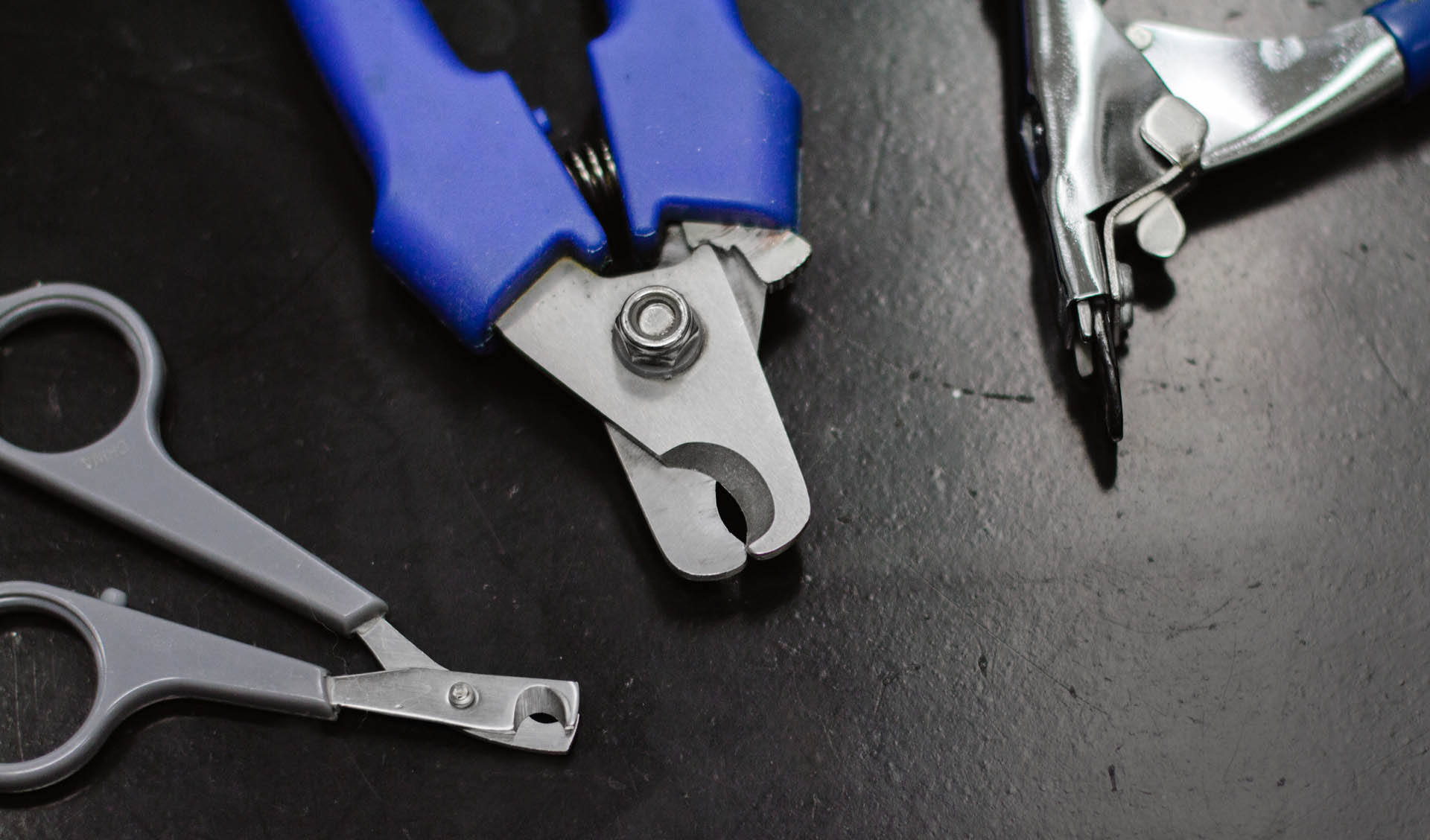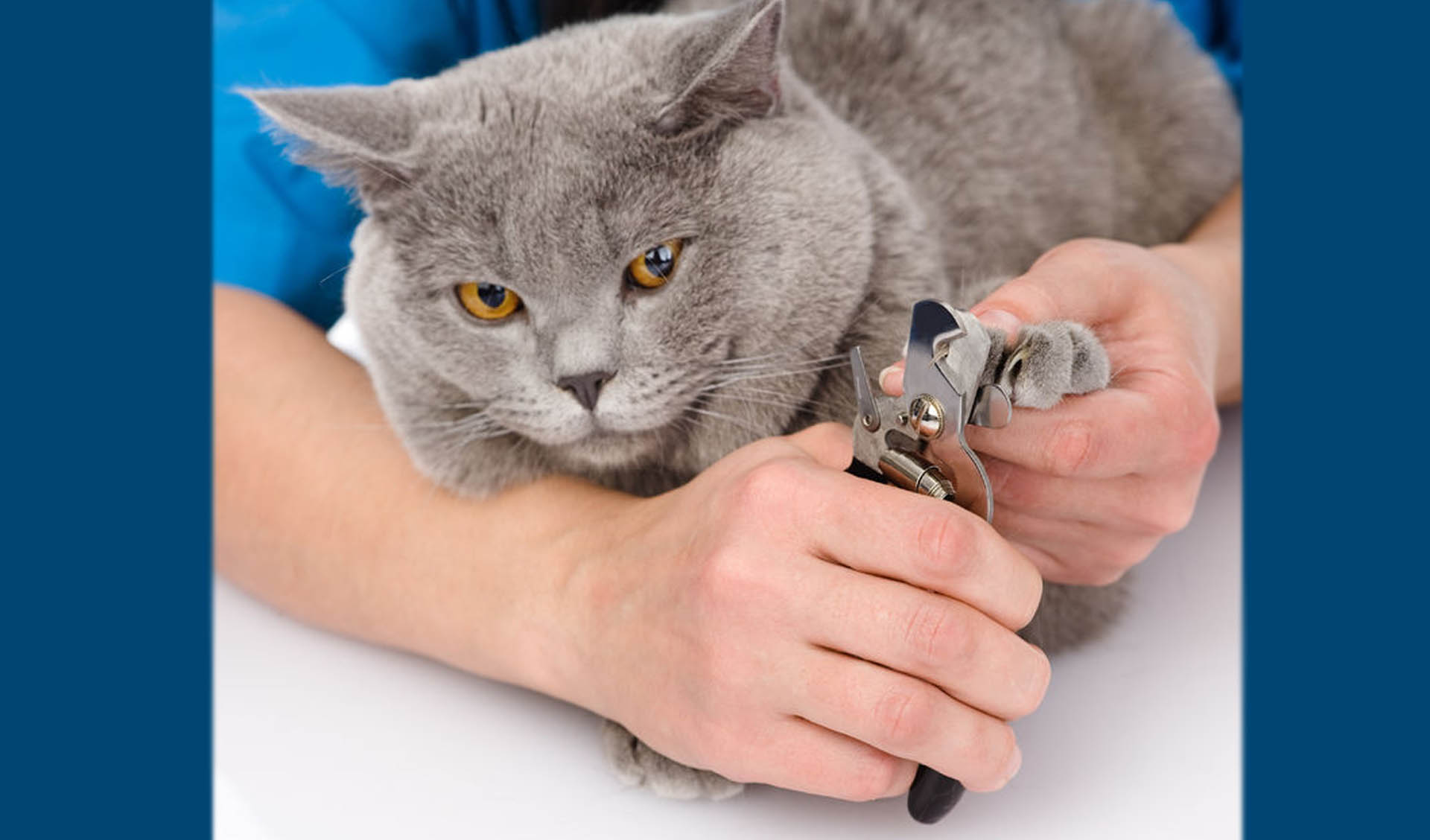Cats require regular nail trims to ensure healthy nail beds and avoid ingrown nails. Untrimmed nails can break causing pain, lead to excessive scratching, or even start to curl and grow into the pad causing discomfort and, potentially, infection. Cats that are polydactyl (have extra toes), are at a higher risk of developing ingrown nails making it crucial to perform regular nail trims.
Your cat’s nails should be trimmed every 4 to 6 weeks depending on how quickly they grow. When nails start to get long, are noticeably sharp or start to get caught on furniture, carpet or even your clothes, then your cat is due for a nail trim.
Before attempting a nail trim, it is important to understand the anatomy of the nail and invest in a good pair of nail clippers. There are several types of clipper styles and sizes available. Ensure you get one that is the appropriate size. We recommend using scissor style clippers for nail trims.
Cats usually have 5 nails on each front paw and 4 on each back paw. Within each nail, there is a blood vessel referred to as the quick. Cats’ nails are light in colour making it easy to see the quick. When cutting a nail, you want to cut the excess only in front of the quick. If the nail is cut too short, there will be discomfort and some bleeding. In the event that the quick is accidentally cut, you should have a clotting agent on hand to help stop any bleeding. You can purchase styptic powder at most pet stores or simply use cornstarch or flour.
Before starting, get everything ready including nail clippers, your styptic powder, flour or cornstarch and a Q-tip or facial tissue. The best time to attempt a nail trim is when your cat is tired or in a calm mood. If nail trimming is new for your cat, start slowly by getting him used to having his paws touched, then by protruding his nails and finally by cutting his nails. Start off with just one nail at a time and work up to cutting all of the nails in one session. It is best to cut one nail a day as a slow introduction.
Depending on your cat you may need a helper to hold him. You can sit on the floor, have your cat on your lap or have a helper hold the cat on a table. Use your less dominant hand to protrude and stabilize the nail by placing a finger above the nail and another on the pad and gently pushing. Once the nail is exposed, identify the quick and where it ends. With the clippers in your dominant hand, cut the nail just in front of the quick. If you cut the quick, simply dab away any blood with the facial tissue or Q-tip and apply your clotting agent by pressing it against the nail. Some cats have brittle nails that can shred when trimmed – this is normal. Do your best to remove any loose pieces of nail with your fingers and tidy up the cut nail using the clippers.
It is best to trim a small amount more often rather than cut too much off. If you are not comfortable trimming your cat’s nails, speak with the staff at Centrepointe Animal Hospital or a groomer before starting. Once your cat has become accustomed to having its nails trimmed, it will be a quick and painless task.


